Rewinding to 2019, Mike Brazelton provided insight look into the visual effects work made by DNEG for Fast & Furious Presents: Hobbs & Shaw. Since then, his creative journey has taken him through projects including See, The Matrix Resurrections, and Bullet Train.
How did you get involved on this movie?
I was finishing up Bullet Train as production supervisor and Lori Furie (Sony VFX executive) asked me if I’d like to meet with S.J. Clarkson to talk about Madame Web.
How was the collaboration with director S.J. Clarkson?
S.J. was really involved in every aspect of making this film. She wanted to understand how things work across the board. There was a lot of previs at the start and that is where we started figuring out this world. S.J. is a very hands-on director and has a strong vision for how things should look and how they could support the story.
How did you organize the work with your VFX Producer?
This is the second film in a row that I have worked with Whitney Richman so it was really easy to organize and manage the work together.
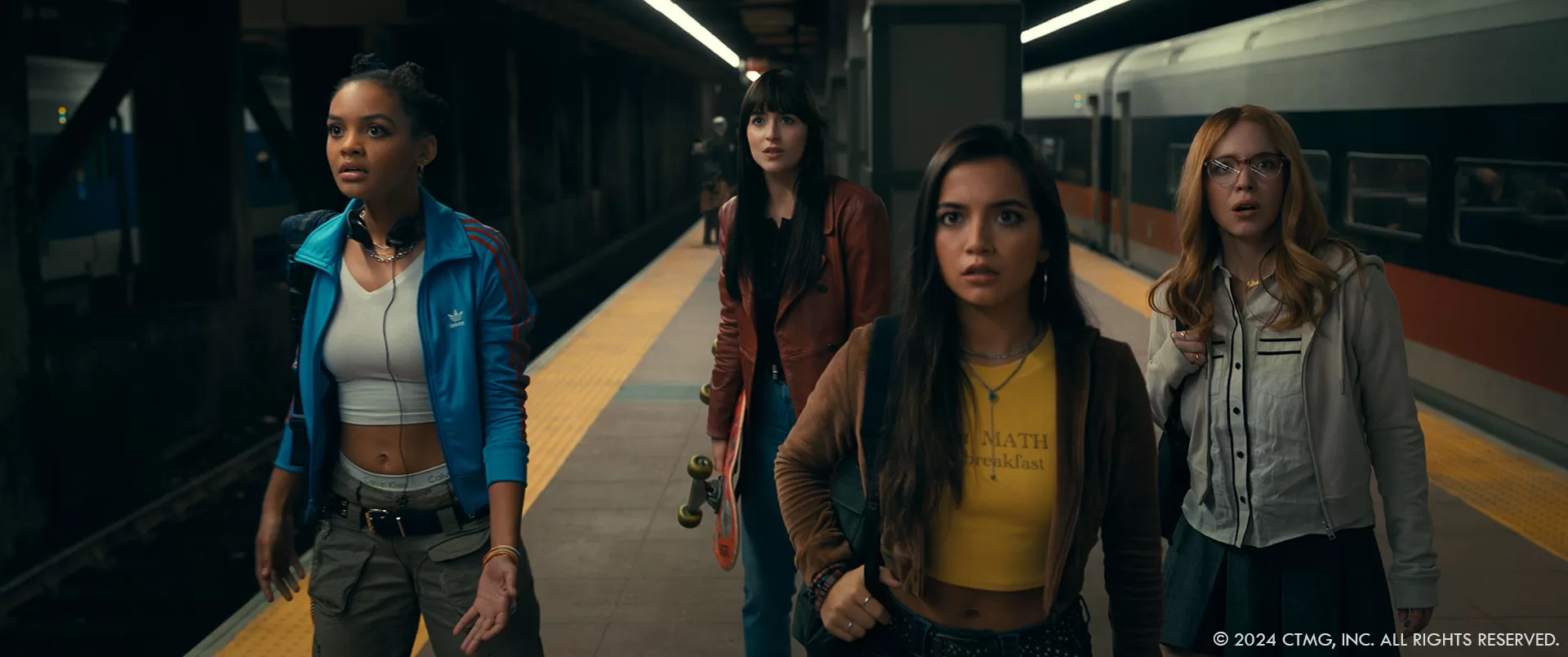
How did you choose the various vendors and split the work amongst them?
We always try to pick the vendors based on the work we need done. Some of it’s based on the reels of the vendors, past relationships, and what supervisors are available.
What is your role on set and how do you work with other departments?
We had a fair amount of bluescreen work and sets on the film. I was really involved with all of the departments. Working with Mauro Fiore (the DP) to figure out what the world outside of the bluescreen looks like and how to light it so my work supports his. Working with Brycen Counts (stunts) in how we take over from the practical stunts and help keep things safe and plausible. Ethan Tobman (production designer) and I worked together a lot so his vision was maintained throughout the film.
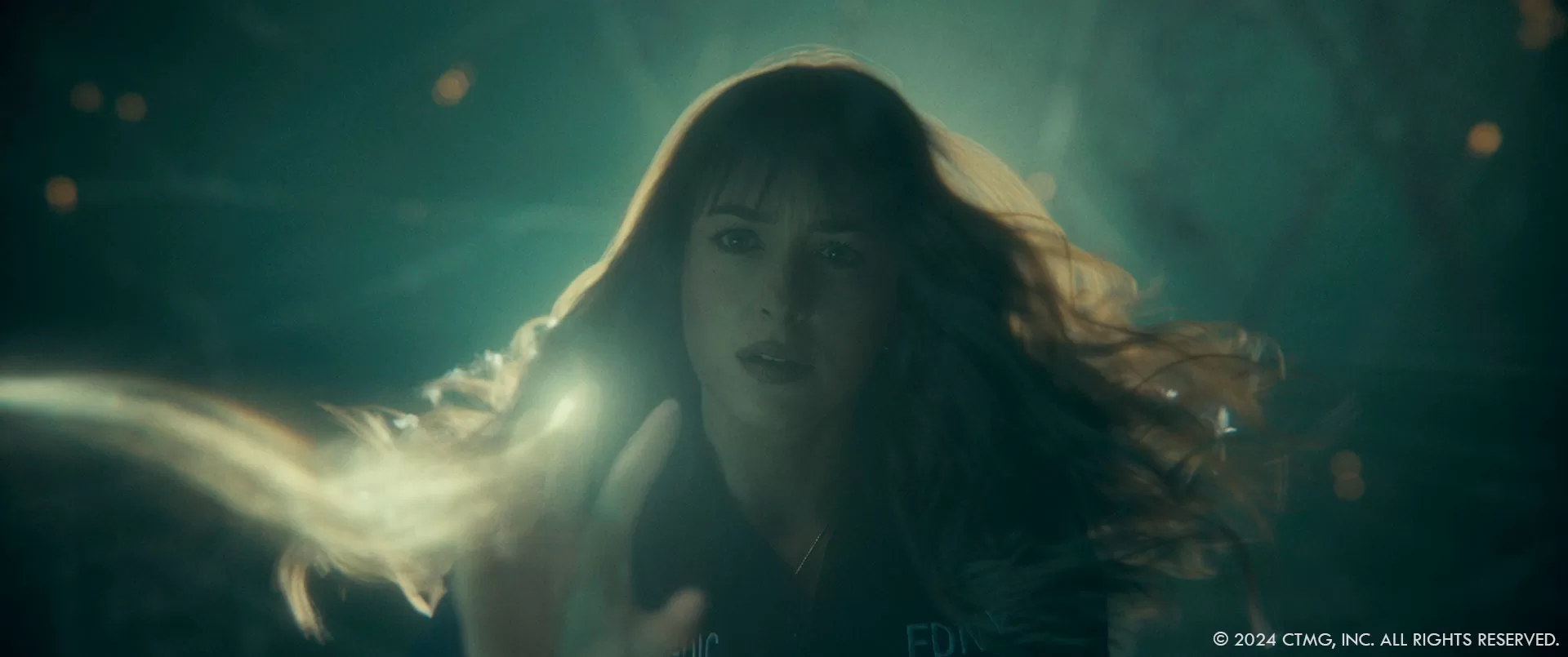
Could you elaborate on the conceptualization process behind the creation of the new spider species?
We wanted to do a spider that was a nod to the previous Spiderman spiders, but take it to a new level. We had quite a few shots with the spider in it so we built it to hold up to all angles/sizes in the film. Ethan Tobman and I started with real photographs of spiders to narrow down a base to work from. Once SJ was happy with that, it was tweaking it to make it work for the story and also introducing colors that worked with the Spiderman universe.
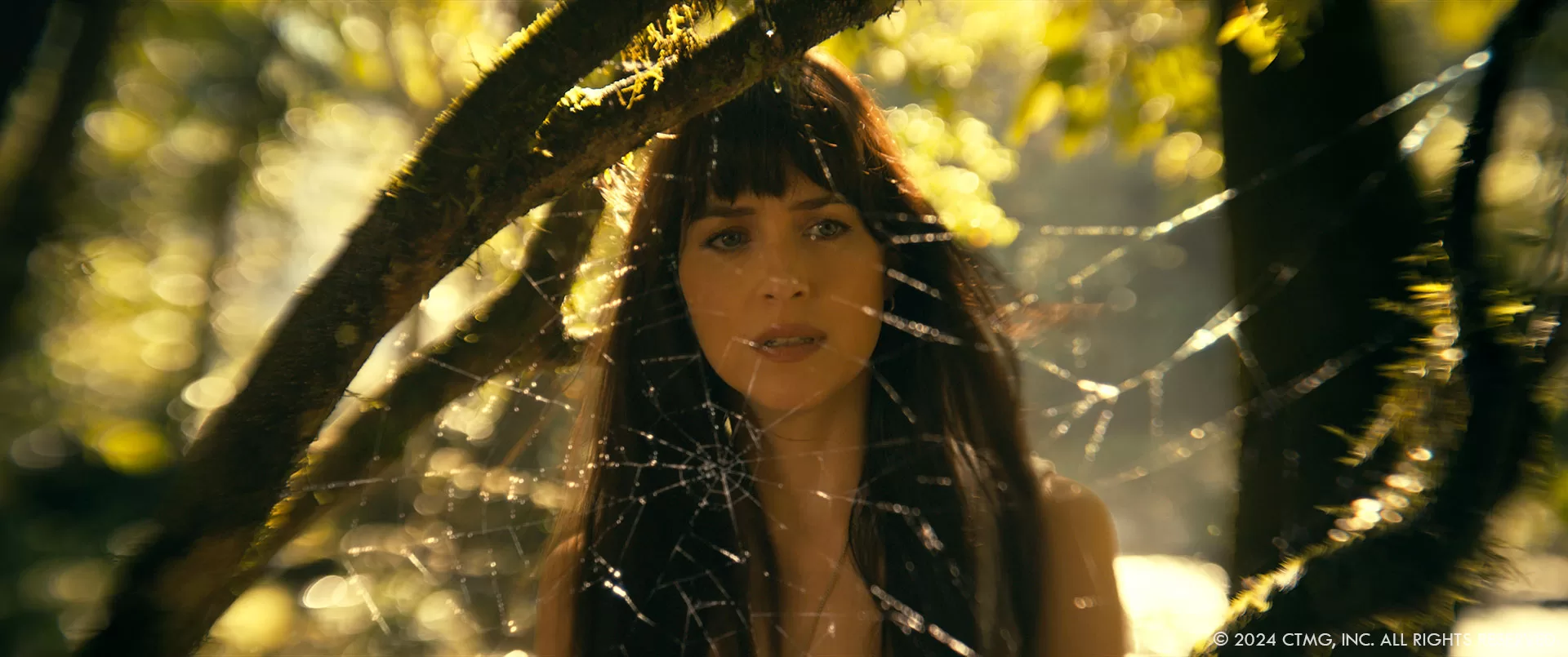
What techniques were employed to bring this spider species to life on screen, and how did you ensure its seamless integration into the live-action sequences?
We built a miniature spider that we had on set for lighting and scale reference. It was really valuable for some wider shots as it worked well enough to be in the film as is. For the closer shots, we studied a lot of real-world spider references. Luckily there is a lot of content out there with spiders on people’s hands. We studied how spiders move across webs and how they generate webs as well.
How did you approach the animation of the new spider species to convey its unique characteristics and behaviors, and what were some of the challenges faced during this process?
The basis of the spider’s character was reality, and we did a lot of animation tests and studies based on that. Once we had shots to work in and we started understanding the character of the spider we started adding subtle movements and personality cues to it. Oli Atherton at beloFX was key in the process and tackled the job with a lot of enthusiasm. S.J. wanted the spider to almost have Stockholm syndrome after it was captured, having it like Ezekiel and wanting to be near him.
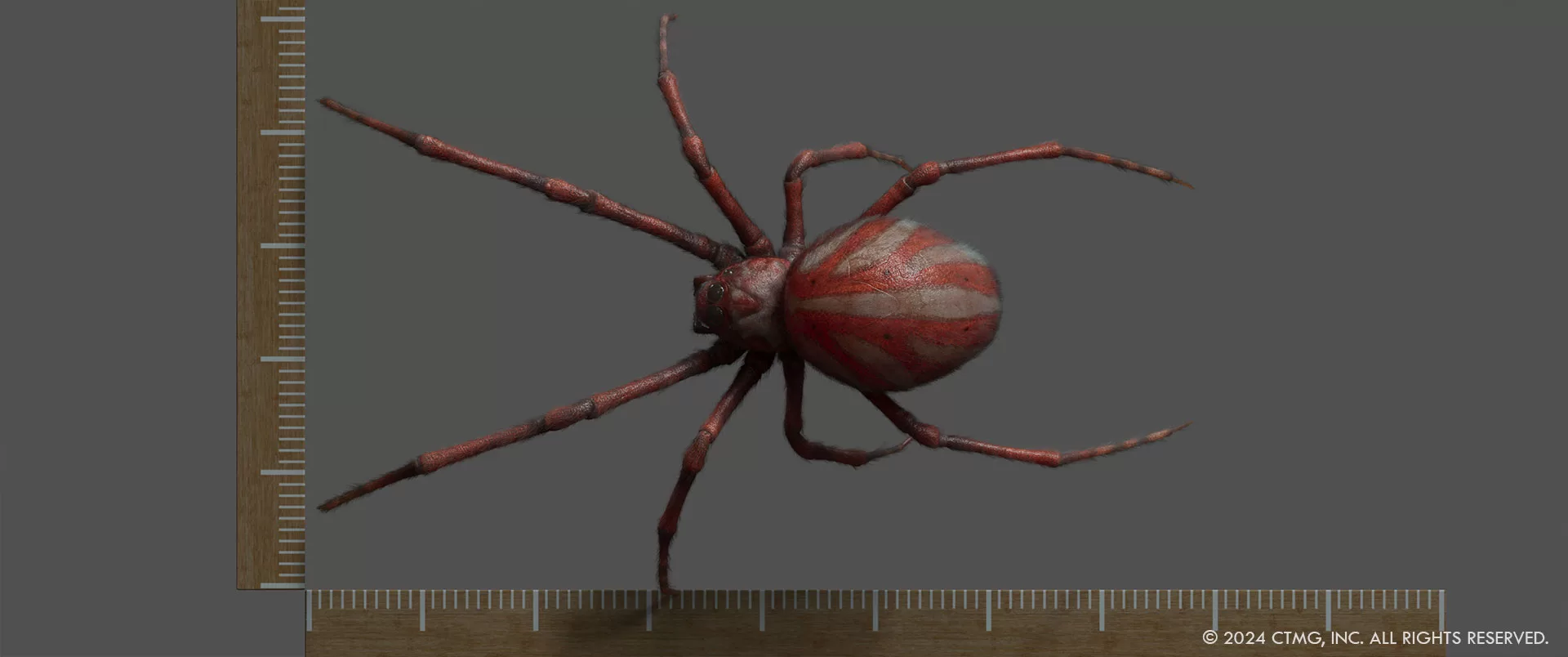
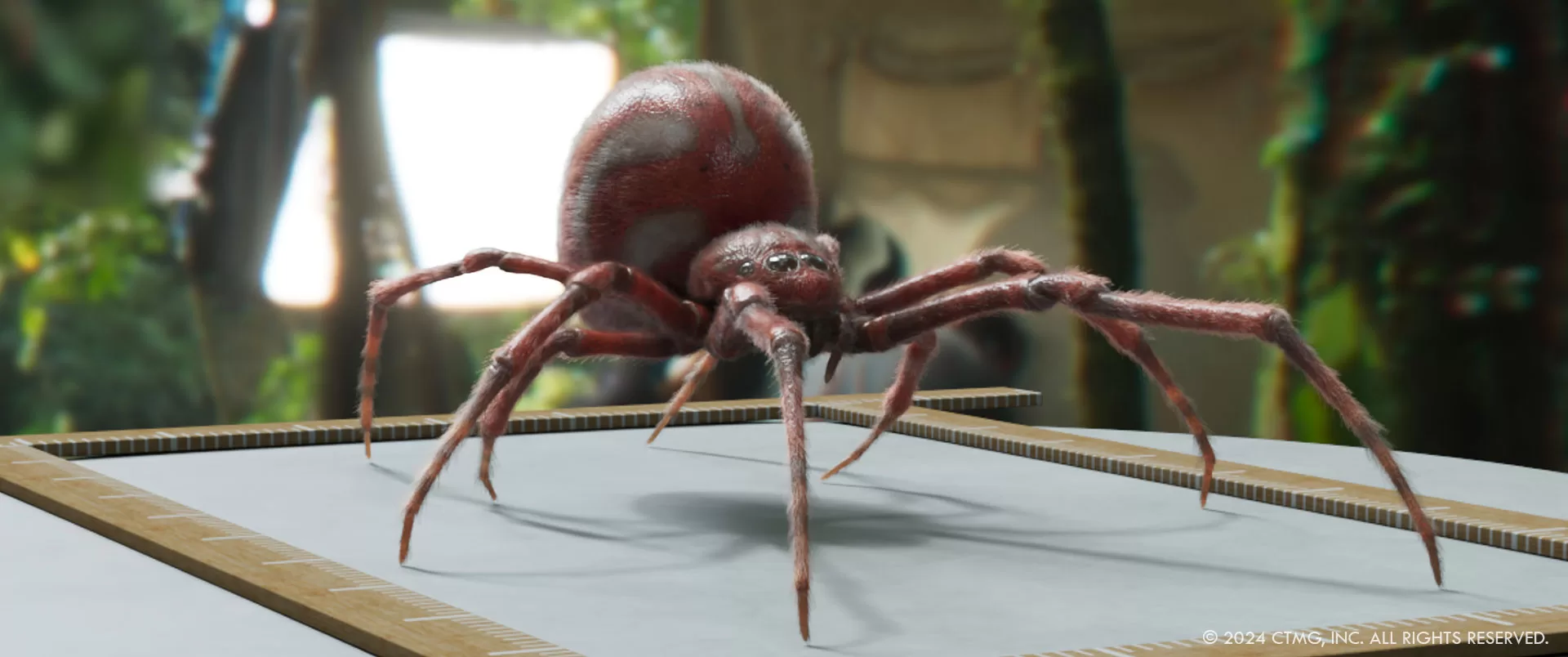
What techniques were employed to convey Madame Web’s psychic powers through visual effects?
S.J. had a glass diopter on set that she would use to manipulate the image. Our first task was to emulate that in VFX so we could add it to shots she couldn’t physically do. We also created this web vision tunnel that was meant to show the journey from her mind’s eye into the clairvoyant event.
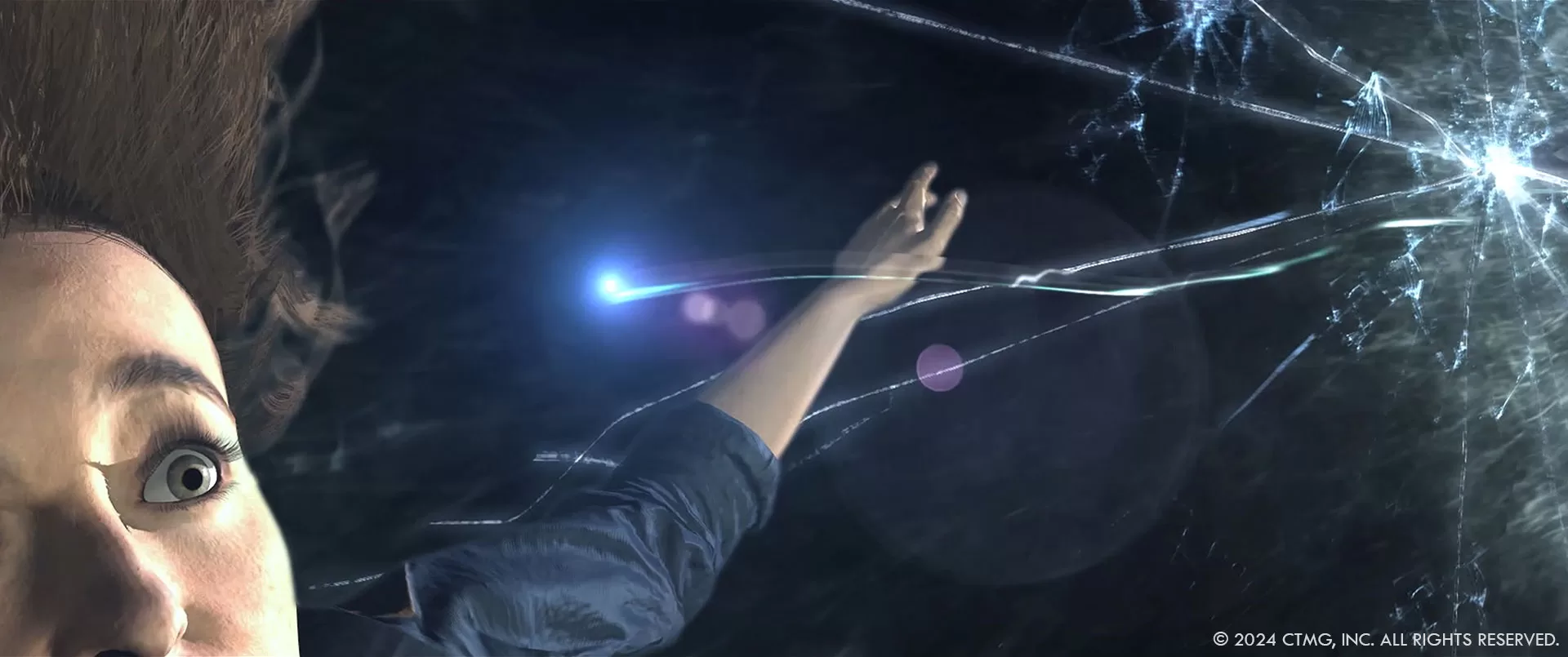
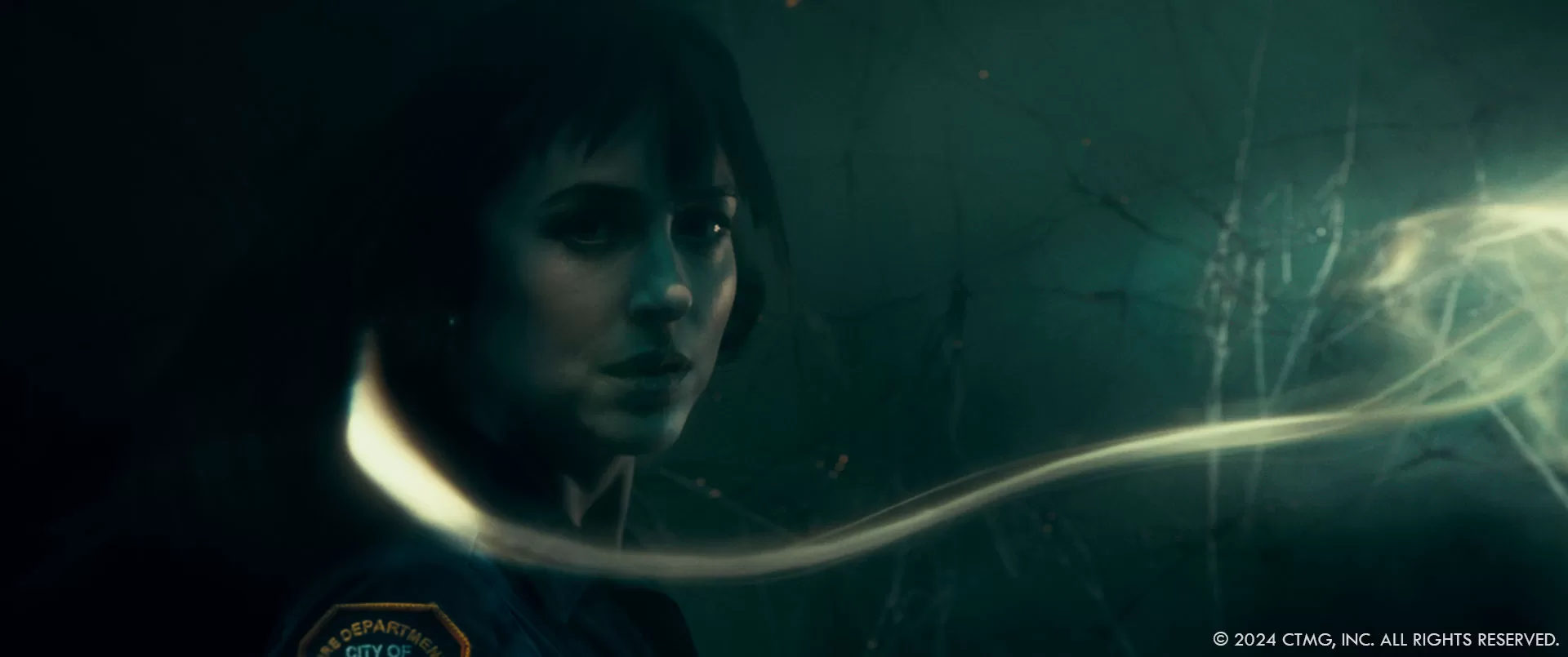
Were there any specific references or inspirations drawn upon for Madame Web’s visual effects, particularly in relation to her psychic abilities?
We referenced all of the previous superhero films and found ourselves landing on the Doctor Strange astral projection look in the first film. We took that as a starting point and worked up our own take on that. Ola Hamletsen at One of Us was key in that process. They brought a fresh new take to the look.
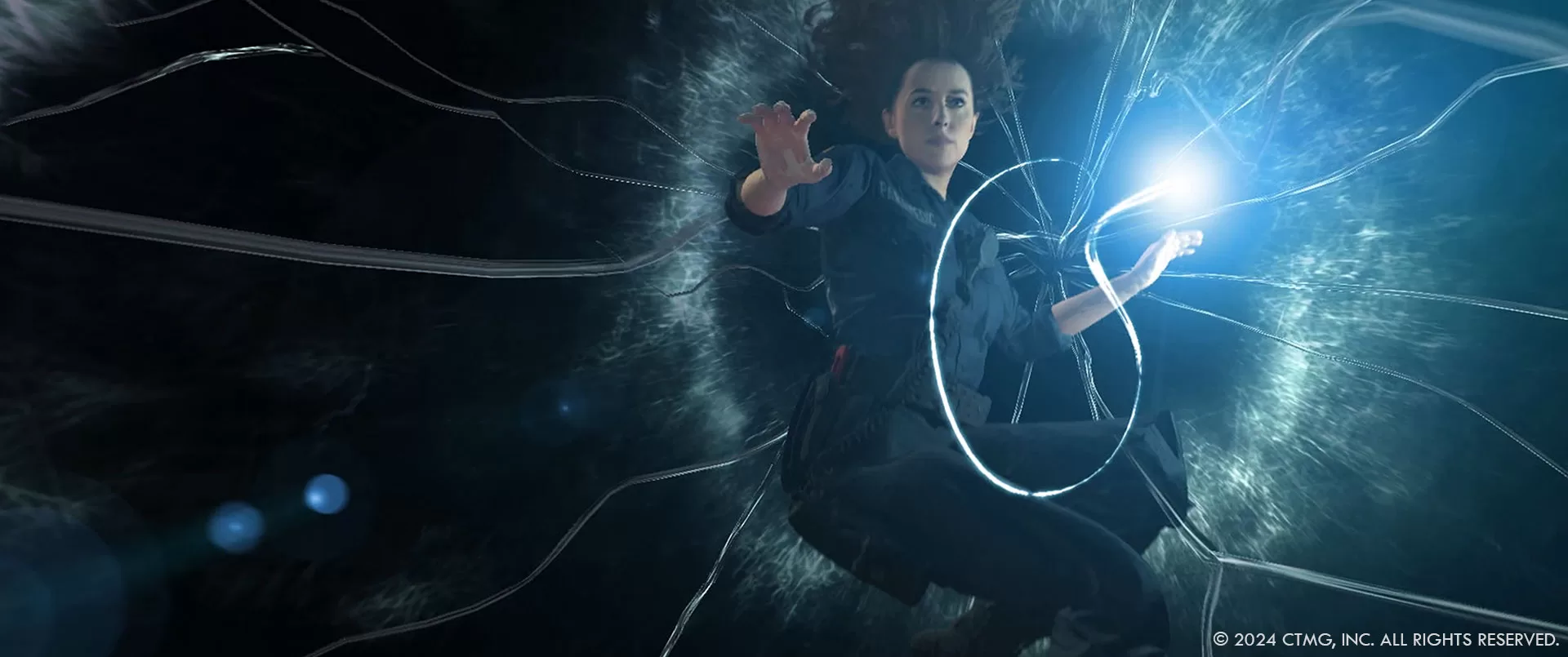
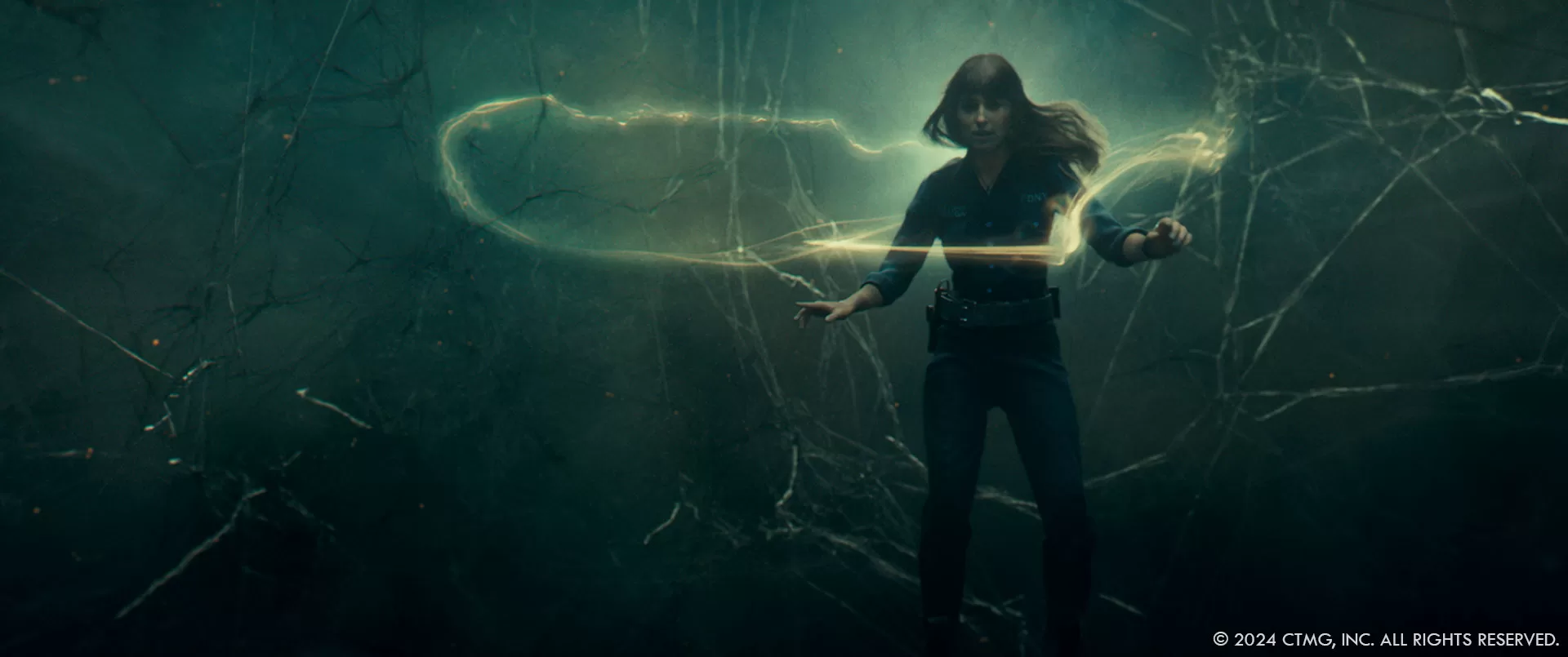
How did the visual effects team ensure that Madame Web’s powers remained visually distinct from other similar characters in the superhero genre?
I think we are always all borrowing from each other, whether inspiration starts with a film reference or an artist’s work. I think what makes any visual art different from others is if you are changing things to suit the story/language of the film. Starting with a base that is familiar and tweaking it and changing it so it supports what is different about our character.
Were there any practical effects or elements combined with CGI?
There were a ton of practical effects in the film. Jeremey Hays (DFX HoD) had his hand in so much in the film. Whether it was launching a real car off a bridge or blowing up fireworks on the rooftop set. We were either matching into looks that were established with his real FX, or supporting where the real FX couldn’t be done.
Can you describe the evolution of Madame Web’s visual effects from concept to final execution?
The more subjective work like the underwater dark void work certainly took the duration of the film to find the look. The more traditional work like the set extensions and blowing things up was pretty straightforward.
Can you discuss any specific scenes where visual effects were particularly challenging or innovative?
The dark void work and the astral projection work were really difficult to land as we wanted to do something that had not been seen before. Even down to the look of the hair, SJ didn’t want to just make it look like underwater hair she wanted to push it and see what we could do to make it unique.
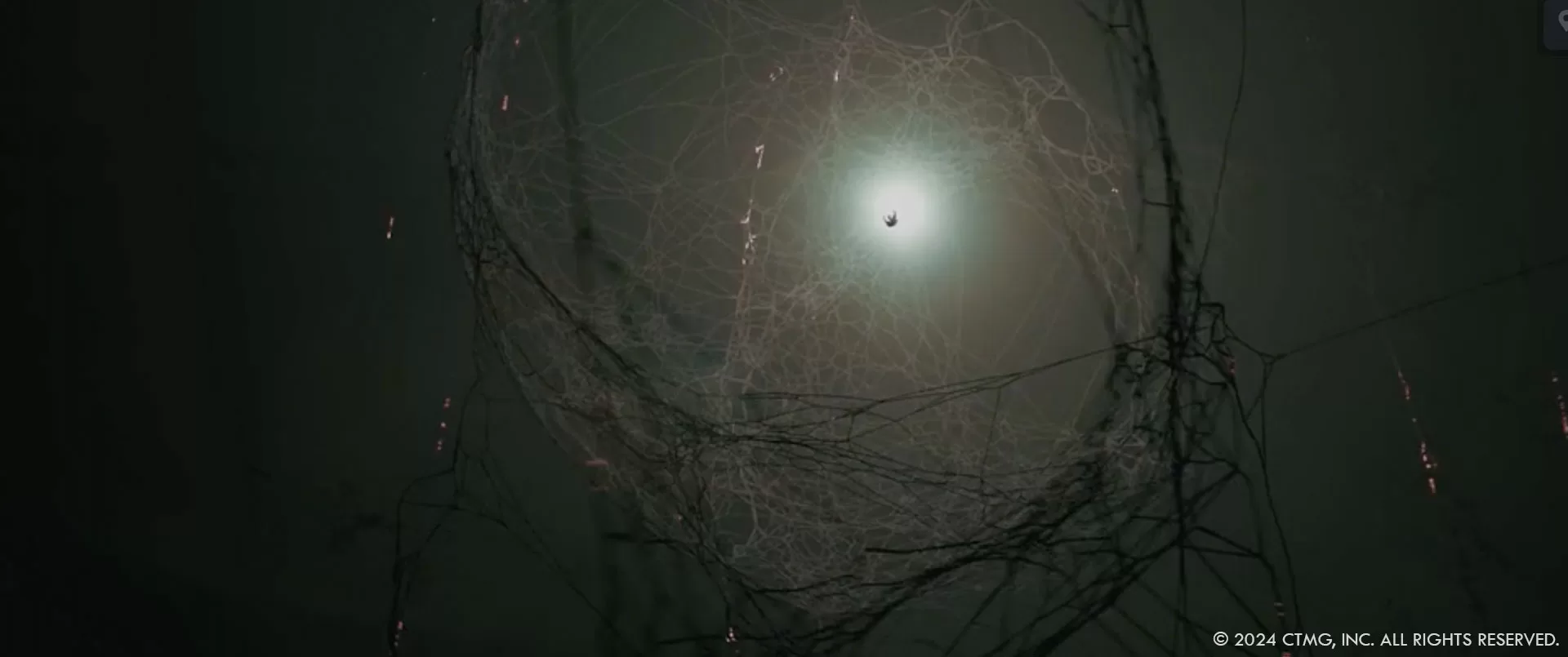
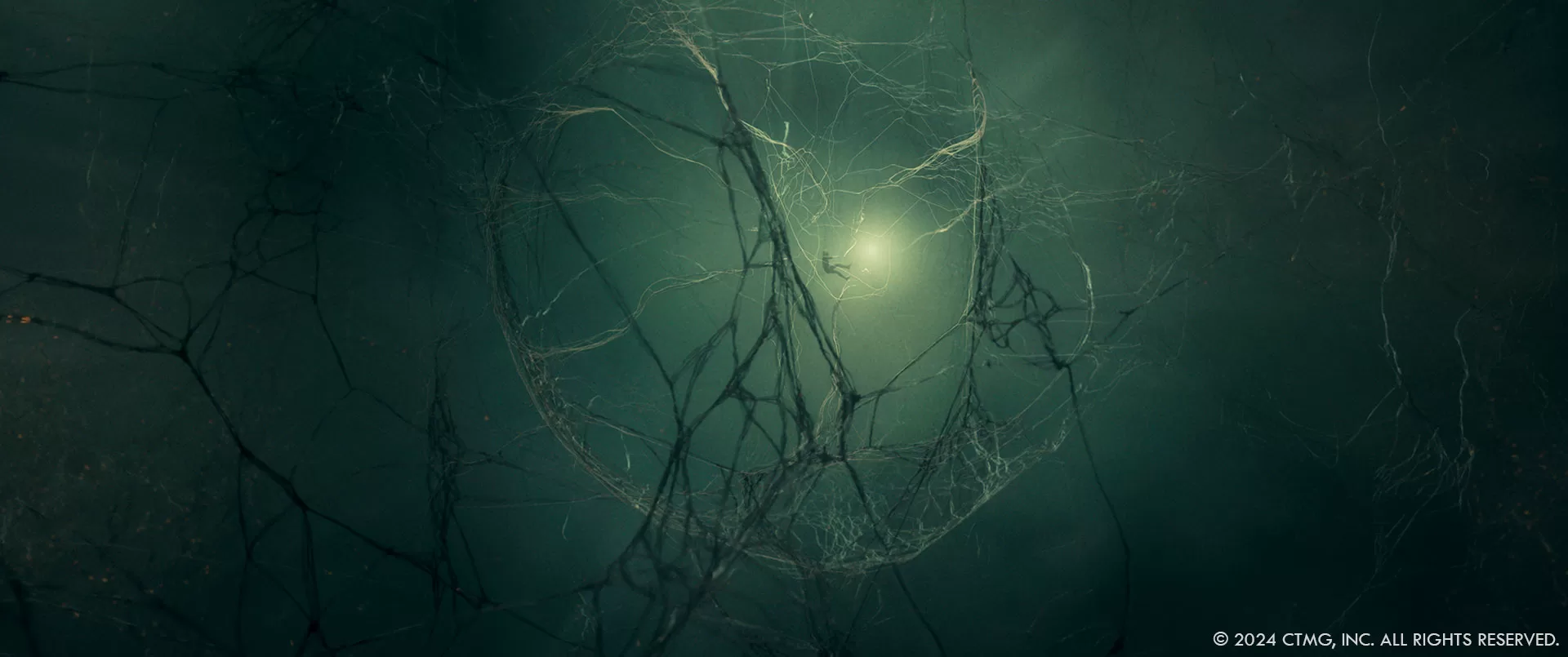
Costume design plays a pivotal role. How did the costume designers work in collaboration with your team to create the various costumes?
I worked closely with Ngila Dickson (costume designer). She is a great collaborator and was a dream to work with. The main thing we needed to work together on was how to do the costumes work with the powers of the various characters. It was great to have a strong look for each character so they stand out on their own.
Can you shed light on the use of digital doubles in the action scenes?
We used digi doubles whenever we couldn’t do a scene with an actor or stunt performer. There are a lot of digi characters in the film and the actors and stunt performers were great about being scanned and doing movement tests to support them.
Were there any memorable moments or scenes from the series that you found particularly rewarding or challenging to work on from a visual effects standpoint?
Working with the diopter did make things harder for tracking/comping. When you have a refractive piece of glass over the lens, getting the work to sit in the frame is challenging. It was worth it though as you have a beautiful plate to start with that you really cannot emulate in VFX.
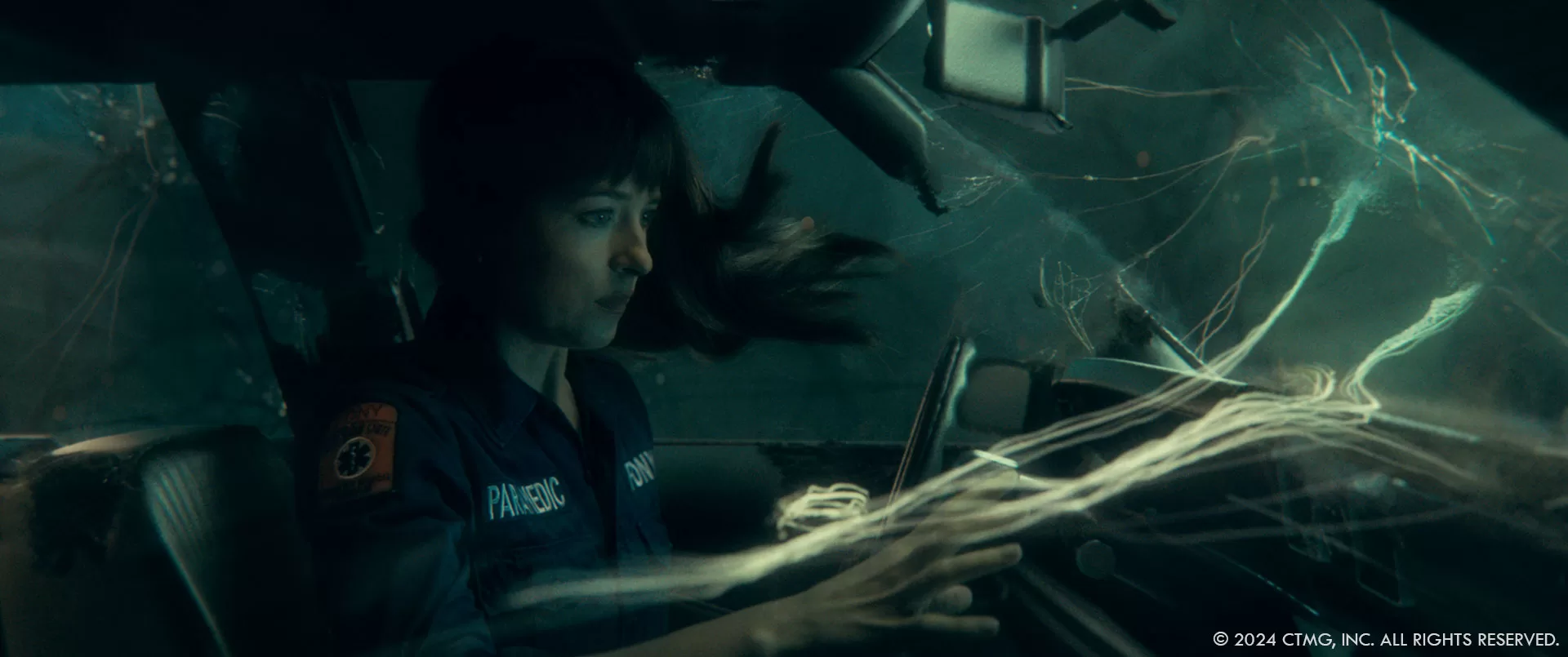
Looking back on the project, what aspects of the visual effects are you most proud of?
The storytelling aspects are always the ones that I feel the most proud of. When you can support the story of the film it’s a great feeling. All of the vendors and my internal production team did an amazing job on this film.
Tricky question, what is your favorite shot or sequence?
I think the rooftop is probably my favorite sequence as there was so much work to do and it was the biggest set. Scott Edelstein at Digital Domain was a great collaborator and made it fun.
How long have you worked on this show?
From start to finish, I was on the show for 23 months. It was a long one.
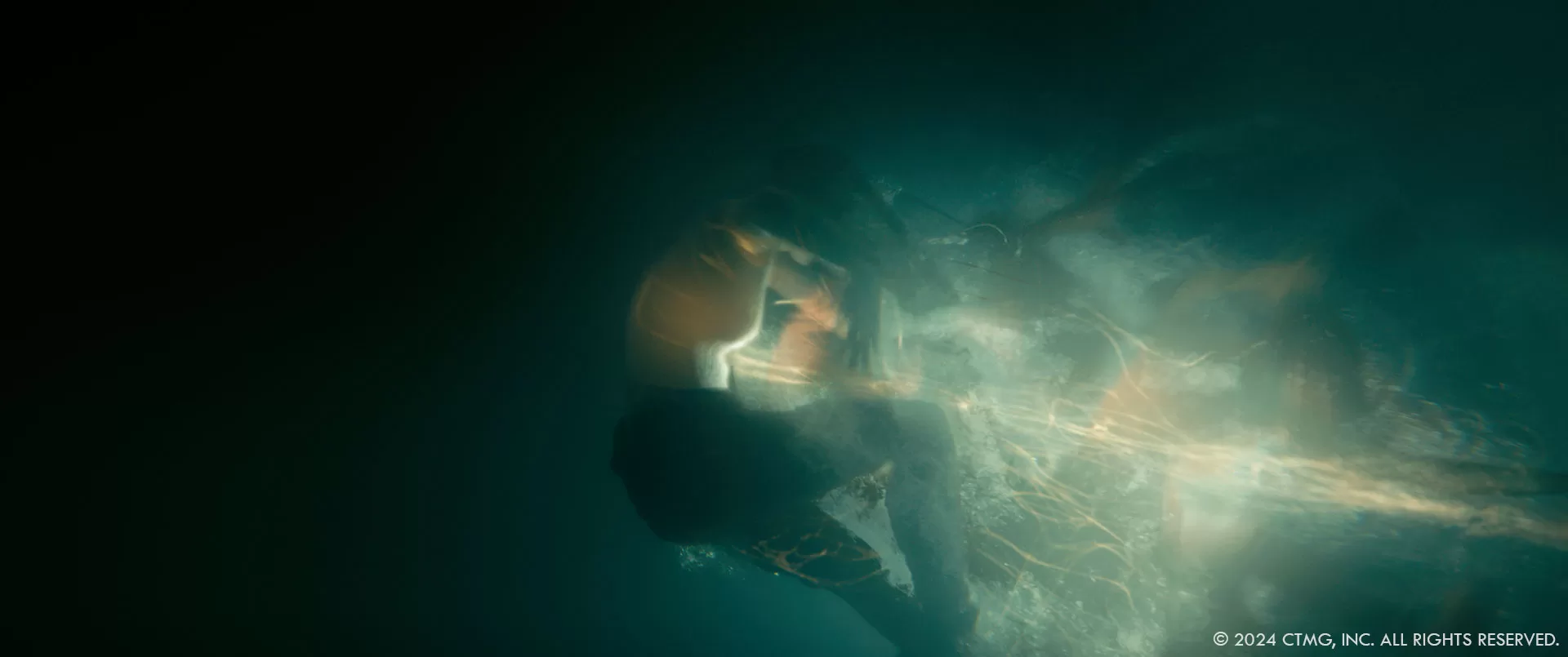
What’s the VFX shots count?
We had over 1100 shots on the film. I want to mention I didn’t supervise the film on my own, Lotta Forssman came on towards the end and we split up the sequences. I couldn’t have gotten through all of the shots without her!
What is your next project?
No next project yet! I didn’t get a break between Bullet Train and Madame Web so I’m taking a long break right now.
A big thanks for your time.
WANT TO KNOW MORE?
Digital Domain: Dedicated page about Madame Web on Digital Domain website.
beloFX: Dedicated page about Madame Web on beloFX website.
Digital Domain: Dedicated page about Madame Web on Digital Domain website.
One of Us: Dedicated page about Madame Web on One of Us website.
© Vincent Frei – The Art of VFX – 2024




